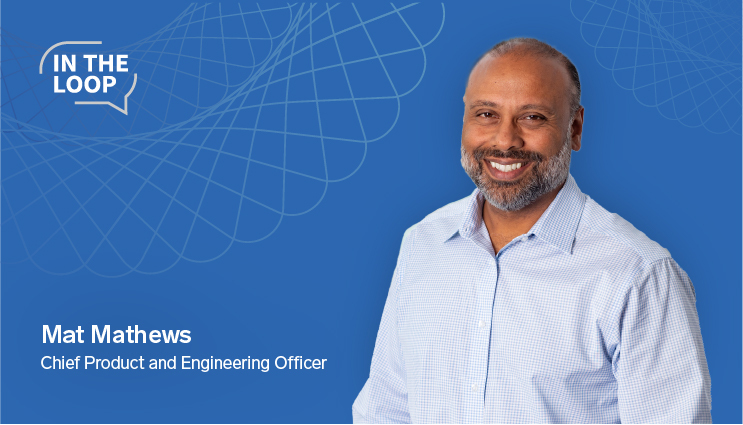Designing the Future of Client Experience
We live in a world of intelligent technology. The apps we use for travel, shopping, fitness, and healthcare remember preferences, anticipate needs,...
Solve your current pain points with our award-winning solutions.
Increase automation with our modern wealth platform.
The leading end-to-end wealth management platform.
Our team works to anticipate and surpass our clients’ expectations.
Merge our open, integrated platform and its solutions into your tech stack.
The #1 reason advisors switch firms is the desire for better technology.

Top advisors aren’t born—they’re built. And their habits are hiding in your data.
Most wealth firms have a tier of top advisors who perform at a much higher level than their colleagues. They grow their book of business faster, retain a higher percentage of clients, and navigate market cycles with a steadiness that others struggle to match. Their superior stats inform the story—but numbers only go so far when it comes to translating that success into actionable lessons. It’s their daily habits, practiced over years, that truly shape how these advisors work and why they succeed.
The challenge is that most firms can’t identify these habits, let alone scale them. The behaviors separating top performers from everyone else remain anecdotal, trapped in manager intuition, folklore, and the occasional performance review. Meanwhile, the rest of the advisor workforce is left without a clear picture of how to improve, and leaders have limited insight into how to intervene.
But imagine if that could change. What if your firm could identify key behaviors across your advisor population, understand which ones move the needle, and model them in a way that lifts performance at every tier? With modern analytics—including machine-learning techniques that detect patterns across millions of interactions—firms can surface these behaviors systematically, not anecdotally.
In this case, the behaviors and practices of your top advisors could become a playbook for the firm instead of a mystery.
There’s no better time to leverage data-driven insights to guide the future success of your firm. The industry is heading toward a talent shortage while expectations for productivity, client experience, and personalization continue to rise. What’s more, the main metric firms focus on—AUM growth—is an increasingly unreliable barometer of skill. A strong market can mask mediocre habits, while a volatile one can make a capable advisor look like they are struggling.
Yet, in many cases, those same firms have access to data that could illuminate what’s really driving performance. Every CRM interaction, every follow-up pattern, every instance of proactive outreach or silence, every use—or non-use—of planning, reporting, and portfolio tools is a clue. Collectively, those clues form a behavioral fingerprint for each advisor. AI can help interpret that fingerprint at scale, separating true behavioral signals from background noise across different advisor models. The story is there, waiting to be read and interpreted.
Forward-thinking firms are beginning to ask a new question: What if we could connect the dots?
When firms begin to use data to identify the behavioral signals of success, a picture emerges—one that feels both intuitive and revealing. Top advisors aren’t simply “good with clients” or “diligent.” They act with a rhythm and intentionality that compounds over time. Maybe they reach out before clients ask for help, especially during moments of uncertainty. Or they attend more client weddings and birthday dinners than their peers. Or they use planning and reporting tools not just to show information, but to translate it—turning data into narratives to help them serve clients better.
None of these habits are magical. They are measurable. And when viewed across a firm, they can become patterns that leaders can observe, coach to, and scale.
Any rigorous, data-driven approach to insights also recognizes context. Not every advisor serves the same clients, operates in the same business model, or faces the same mix of products and needs. The behaviors that matter for a planning-heavy RIA may look different from those that matter in an insurance-oriented practice. That nuance is essential. The goal is not to make every advisor identical, but to understand the specific behaviors that matter most within their world—and then help them strengthen those habits.
At Advisor360°, we’ve pioneered an approach around the belief that firms can achieve predictable growth when they understand the connection between what advisors do and the results they generate. Our work focuses on helping firms use their data to uncover insights in a structured, peer-aware, and high-context way—so performance improvement becomes a continuous process, not a crisis response. This framework is powered by advanced analytics, including machine learning, to understand not just outcomes but the behaviors that lead to them. To make this shift from intuition to insight, we developed a guiding framework around three core components:
This new approach to advisor performance intelligence isn’t about replacing human judgment with proprietary analytics; it’s about giving leaders and advisors a shared, evidence-based language for what good looks like, and a way to build those habits firm-wide.
How to Get Started
If your organization is interested in learning more about using data-driven insights—or exploring how performance intelligence can elevate your advisors—contact us to schedule a consultative demo. We’ll walk through how we partner with firms to uncover the habits that matter most and turn them into a repeatable advantage. In the meantime, visit our website or follow us on LinkedIn.
Mohit Daga is Group Product Leader at Advisor360°.

We live in a world of intelligent technology. The apps we use for travel, shopping, fitness, and healthcare remember preferences, anticipate needs,...

Schwab IMPACT 2025 lived up to its reputation as one of the liveliest gatherings in our industry. You could feel the energy, optimism, and curiosity...

Legacy technology foundations are making your AI slow, unreliable, and less effective. Learn how to move from tactical to transformational.